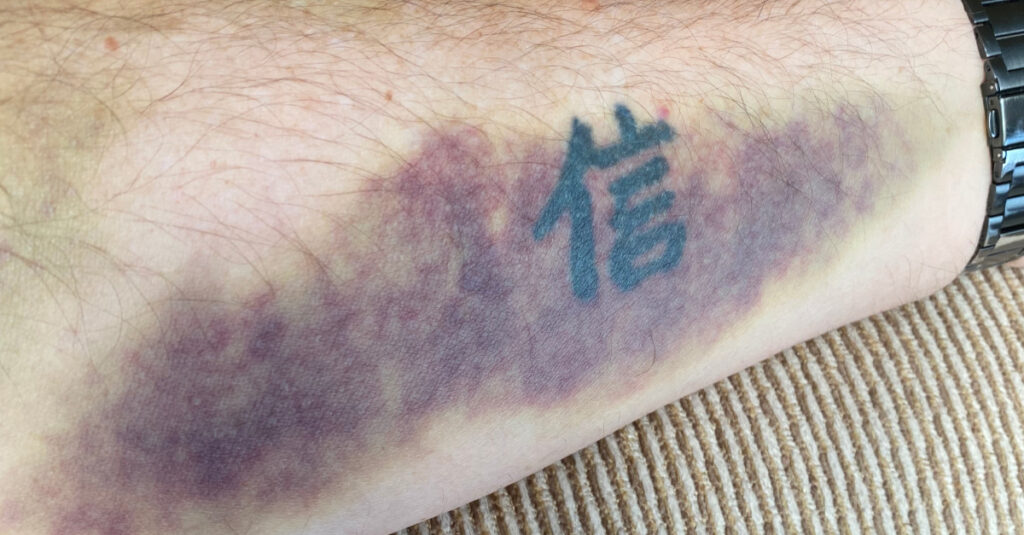Following round 4 and the infusion of high-dose cytarabine, I needed to inject myself with Zarxio for 10 days. Zarxio increases white blood cells impacted by cytarabine, crucial for fighting infections. These injections were administered in the thigh, alternating thighs each night.
I would only take the study drug acalabrutinib during the first 7 days (1-7) of round 4 and the last 7 days (22-28) of the round. The impact of cytarabine on my blood cells meant additional chemo via the study drug would be too much for my body. This wasn’t specific to me but part of the clinical study’s process.

On day 4 of this round, I felt pretty good, despite being very tired and a bit nauseous. I even managed to move an umbrella stand base from our lower level to the patio. It wasn’t large or heavy, but it kept the umbrella stable. However, on day 10, a huge, painful bruise developed, feeling like pins and needles when touched, the pain lasted through day 28.
Due to the expected impact of cytarabine on my blood cells, I underwent CBC blood tests every other day. My platelet count was 79 when I started round 4. By day 6, it had dropped to 47, and by day 9, it was only 11.
With a platelet count of 11, I was instructed to get a platelet infusion, as Dr. Rajguru had warned me was likely. Instead of driving 2 hours back to Madison, I opted for the infusion at the ER in Wausau. The clinic nursing staff called ahead, and the ER was prepared. After getting checked in and having the infusion without issue, I went home.
On day 12, my platelet count was 2, prompting another ER visit. Kathy, my neighbor, drove me since I shouldn’t drive myself. After a bit of waiting, I was prepped for another infusion. This time, I experienced chills and shaking, the ER RN thought this was likely due to the cold room or cool platelets. After the infusion, I went home, crawled into bed with a heating blanket, and slept for 3 hours, with the chills and shakes subsiding after about 5 hours.
On day 14, my platelet count was 11, requiring another infusion. This time, we drove to Madison for the specialized care at UW Health’s infusion department. The staff was surprised I hadn’t received the typical pre-infusion cocktail for my previous ER infusions. For my third transfusion at UW Health, I received the pre-treatment cocktail, making the experience more comfortable.
On day 16, my platelet count was 61, indicating my body was producing platelets on its own. My throat was swollen but not sore, and this swelling lasted only 3 days.
On day 22, I resumed the study drug, and I convinced my oncologist to allow me to work from home part-time. Working was a nice mental break from all that transpired during this round of treatment.
Researching platelet infusions, I learned they typically increase platelet counts by 20-30, with a lifespan of 48-72 hours. I wish I had understood this before treatment round 4 to better prepare mentally.